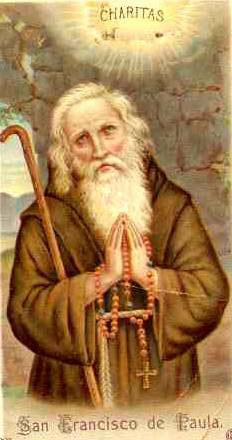 Dear readers, Catholic Online was de-platformed by Shopify for our pro-life beliefs. They shut down our Catholic Online, Catholic Online School, Prayer Candles, and Catholic Online Learning Resources essential faith tools serving over 1.4 million students and millions of families worldwide. Our founders, now in their 70's, just gave their entire life savings to protect this mission. But fewer than 2% of readers donate. If everyone gave just $5, the cost of a coffee, we could rebuild stronger and keep Catholic education free for all. Stand with us in faith. Thank you. Help Now >
Dear readers, Catholic Online was de-platformed by Shopify for our pro-life beliefs. They shut down our Catholic Online, Catholic Online School, Prayer Candles, and Catholic Online Learning Resources essential faith tools serving over 1.4 million students and millions of families worldwide. Our founders, now in their 70's, just gave their entire life savings to protect this mission. But fewer than 2% of readers donate. If everyone gave just $5, the cost of a coffee, we could rebuild stronger and keep Catholic education free for all. Stand with us in faith. Thank you. Help Now >
Historically delicious: Colonial Williamsburg expert creates chocolate like you've never seen or tasted before
FREE Catholic Classes
In the beginning, chocolate was a bitter and mostly cold drink and it stayed that way for some 2,500 years.
Highlights
McClatchy Newspapers (www.mctdirect.com)
10/13/2008 (1 decade ago)
Published in Home & Food
Daily Press (Newport News, Va.) (MCT) - It took a sweet-toothed Spanish conquistador to add sugar to the traditional Aztec beverage sometime in the early 1500s. Another 125 years or so passed before the piping hot version became a standard in English chocolate houses.
Many more changes have transformed the tasty treat since that time _ including the development of cocoa powder and the first solid chocolate bar during the 1800s. But when Colonial Williamsburg foodways interpreter Jim Gay first began looking into the subject about eight years ago, all he wanted to do was go backward.
Today, Gay reigns as one of the world's foremost authorities on the historic chocolate of 18th-century North America. But he still recalls his first attempts to reproduce the long-lost favorite of Washington, Jefferson and Franklin's day with a telltale grimace.
"It was trial and error for about 18 months _ and the more we investigated different ingredients, quantities and processes, the more the few sources we had started to make sense," says Gay, who learned to go from fermented cacao seeds _ known as cocoa nuts or beans _ to finished product entirely by hand.
"But in the beginning, we'd get things that tasted like they came right off the bottom of your shoe."
Gay will share his hard-earned secrets with the public several times over the next few weeks, leading Historic Area visitors through the intricacies of a complex and demanding process.
Beginning with cocoa beans from Venezuela, he'll sort, roast, shell and winnow a raw material that's seldom-encountered today. Then he'll pound and grind the resulting "nibs" until the cocoa butter inside softens and melts, transforming what looks like coarse coffee grinds into a thick, slightly gritty kind of syrup.
"Chocolate begins in the rain forest. It starts with a seed called cacao," he says. "But nothing in the rain forest tastes anything like chocolate until you take it through all the steps."
Picking through the beans is an indispensable part of the process. That's how Gay removes all the dirt, rocks, twigs and bug legs that cling to the seeds when they're left to ferment on the forest floor.
Then he roasts the nuts in a long-handled pan held over an open fire, listening all the while for the sound of popping shells.
"This is the most critical step in the entire process because you taste the roast and the bean at the same time," he says. "A low roast will give you a fruity flavor more like the bean _ and a high roast will taste more like chocolate _ or you can have a marriage of the two."
Too light a roast results in a grassy, bottom-of-the-shoe taste. Too dark will be unpalatably bitter. But as Gay shakes his pan, the Governor's Palace kitchen begins to fill with a just-right, middle-of-the-road aroma.
That satisfying smell grows even stronger after he takes his pan off the fire and begins removing the shells. Winnowing the resulting pile with a woven oak-splint basket, he removes the last little pieces of chaff from the nibs, then begins the long process of pounding and grinding them into a thick, slow-moving chocolate syrup.
"Cocoa nuts are about half fat," he says. "So when you grind them like this, they eventually turn into a liquid."
"Eventually" is the operative word as Gay pushes an iron roller repeatedly across a heated grinding stone. Back and forth the heavy metal cylinder goes, ever so slowly transforming the nibs into a coarse meal, then a gritty paste and finally a honeylike liquid.
Colonial chocolatiers often added sugar and other flavorings to this gooey mass before setting it out to cool and harden into powdery cakes. Nutmeg, hot chilies and cinnamon were some of the most common ingredients used to create a taste that was far less sweet than today's chocolate candy.
Both flavored and unflavored chocolates could be used to make the drink, which commonly mixed about 4 ounces of grated chocolate to every quart of liquid. The resulting hot beverage could be sweetened and adjusted to taste _ and it was far richer, creamier and stronger than the hot cocoa drinks of today, which have most of the fat that leads to thickness extracted.
"Three or 4 ounces of it would give you a real jolt," Gay says. "And when you were finished, you were really ready to get up and go for the day."
Eighteenth-century chocolate was believed to be too strong for children _ even at a time when kids regularly drank beer. It also had a kind of purity and fineness that's virtually unheard of today, when most chocolate comes from what was then regarded as an inferior strain of cacao _ and which was used only to make a poor man's version of the drink.
"This wild cacao was hardier. It could be easily transported and transplanted _ and eventually it became the world's standard," Gay says.
"But anyone in the 18th century would look down on the chocolate we eat today."
___
TRY TO REPLICATE THE FLAVOR AT HOME
If you're looking for a modern-day equivalent of 18th-century chocolate, Colonial Williamsburg foodways interpreter Jim Gay says you have only one real choice.
Inspired by the chance visit of a Mars candy company employee to a Governor's Palace kitchen demonstration, American Heritage Chocolate replicates the old-fashioned irregularity and slightly gritty taste of the past through chocolate blocks and sticks as well as a drink mix.
Mars' Historic Division sells the line exclusively through Colonial Williamsburg, Mount Vernon and other historic sites and museums.
Like the 18th-century versions on which it's based, it's spicy, only slightly sweet and considerably richer in cocoa butter than standard 21st-century chocolate, Gay says.
The company's Web site includes an assortment of period recipes as well as their modern-day equivalents using American Heritage Chocolate. Its "Hot Milk Chocolate" drink recipe may be the best and tastiest starting point for anyone interested in testing out something that's very close to the beverage that Washington, Jefferson and Franklin savored.
"It makes the best chocolate drink I have ever tasted _ though you may have to add a little sugar to taste," Gay says. "But it's really a serving for two. It's pretty rich."
18TH-CENTURY HOT MILK CHOCOLATE
1 quart milk
4 ounces chocolate without sugar
1/8 ounce fine sugar
1/8 ounce flour or starch
Salt to taste
Mix, dissolve and bring to a boil before serving hot.
"The Cook's and Confectioner's Dictionary," by John Nott, 1726
__
A 21ST-CENTURY REPRODUCTION
6 ounces whole milk
1 package American Heritage Chocolate spice drink mix
Sugar to taste
Combine in a straight-sided 1 quart sauce pan and bring to a boil. When chocolate is melted and well combined, remove from heat.
Using a handheld immersion or towel-covered countertop blender, agitate mix to create a foamy top. Serve immediately.
Courtesy of Jim Gay and www.americanheritagechocolate.com
___
NEWS TO USE
What: Historic chocolate demonstrations
When & Where: 11 a.m.-1 p.m. and 2-4 p.m. Sunday at the Prentis Store on Duke of Gloucester Street and 10 a.m-4 p.m. Nov. 4 and Dec. 2 at the Governor's Palace kitchen, both in Colonial Williamsburg
Cost: Prentis store, free. Governor's Palace kitchen, by Historic Area ticket.
Info: 800-HISTORY or www.history.org
___
© 2008, Daily Press (Newport News, Va.).
Join the Movement
When you sign up below, you don't just join an email list - you're joining an entire movement for Free world class Catholic education.

-

- Stations of the Cross
- Easter / Lent
- 5 Lenten Prayers
- Ash Wednesday
- Living Lent
- 7 Morning Prayers
- Mysteries of the Rosary
- Litany of the Bl. Virgin Mary
- Popular Saints
- Popular Prayers
- Female Saints
- Saint Feast Days by Month
- Pray the Rosary
Pope Francis’ April Prayer Intention: Using Technology to Strengthen Human Connections
Finding Peace Through Prayer in a World of Worry
Trump Administration Withholds Federal Grants from Planned Parenthood Over DEI and Civil Rights Concerns
Daily Catholic
 Daily Readings for Wednesday, April 02, 2025
Daily Readings for Wednesday, April 02, 2025 St. Francis of Paola: Saint of the Day for Wednesday, April 02, 2025
St. Francis of Paola: Saint of the Day for Wednesday, April 02, 2025 Prayer for God's Help in Daily Actions: Prayer of the Day for Friday, March 14, 2025
Prayer for God's Help in Daily Actions: Prayer of the Day for Friday, March 14, 2025 Daily Readings for Tuesday, April 01, 2025
Daily Readings for Tuesday, April 01, 2025 St. Hugh of Grenoble: Saint of the Day for Tuesday, April 01, 2025
St. Hugh of Grenoble: Saint of the Day for Tuesday, April 01, 2025- To Perceive Animals as God's Gifts: Prayer of the Day for Thursday, March 13, 2025
![]()
Copyright 2025 Catholic Online. All materials contained on this site, whether written, audible or visual are the exclusive property of Catholic Online and are protected under U.S. and International copyright laws, © Copyright 2025 Catholic Online. Any unauthorized use, without prior written consent of Catholic Online is strictly forbidden and prohibited.
Catholic Online is a Project of Your Catholic Voice Foundation, a Not-for-Profit Corporation. Your Catholic Voice Foundation has been granted a recognition of tax exemption under Section 501(c)(3) of the Internal Revenue Code. Federal Tax Identification Number: 81-0596847. Your gift is tax-deductible as allowed by law.



 Daily Readings for Wednesday, April 02, 2025
Daily Readings for Wednesday, April 02, 2025 St. Francis of Paola: Saint of the Day for Wednesday, April 02, 2025
St. Francis of Paola: Saint of the Day for Wednesday, April 02, 2025 Prayer for God's Help in Daily Actions: Prayer of the Day for Friday, March 14, 2025
Prayer for God's Help in Daily Actions: Prayer of the Day for Friday, March 14, 2025 St. Hugh of Grenoble: Saint of the Day for Tuesday, April 01, 2025
St. Hugh of Grenoble: Saint of the Day for Tuesday, April 01, 2025

